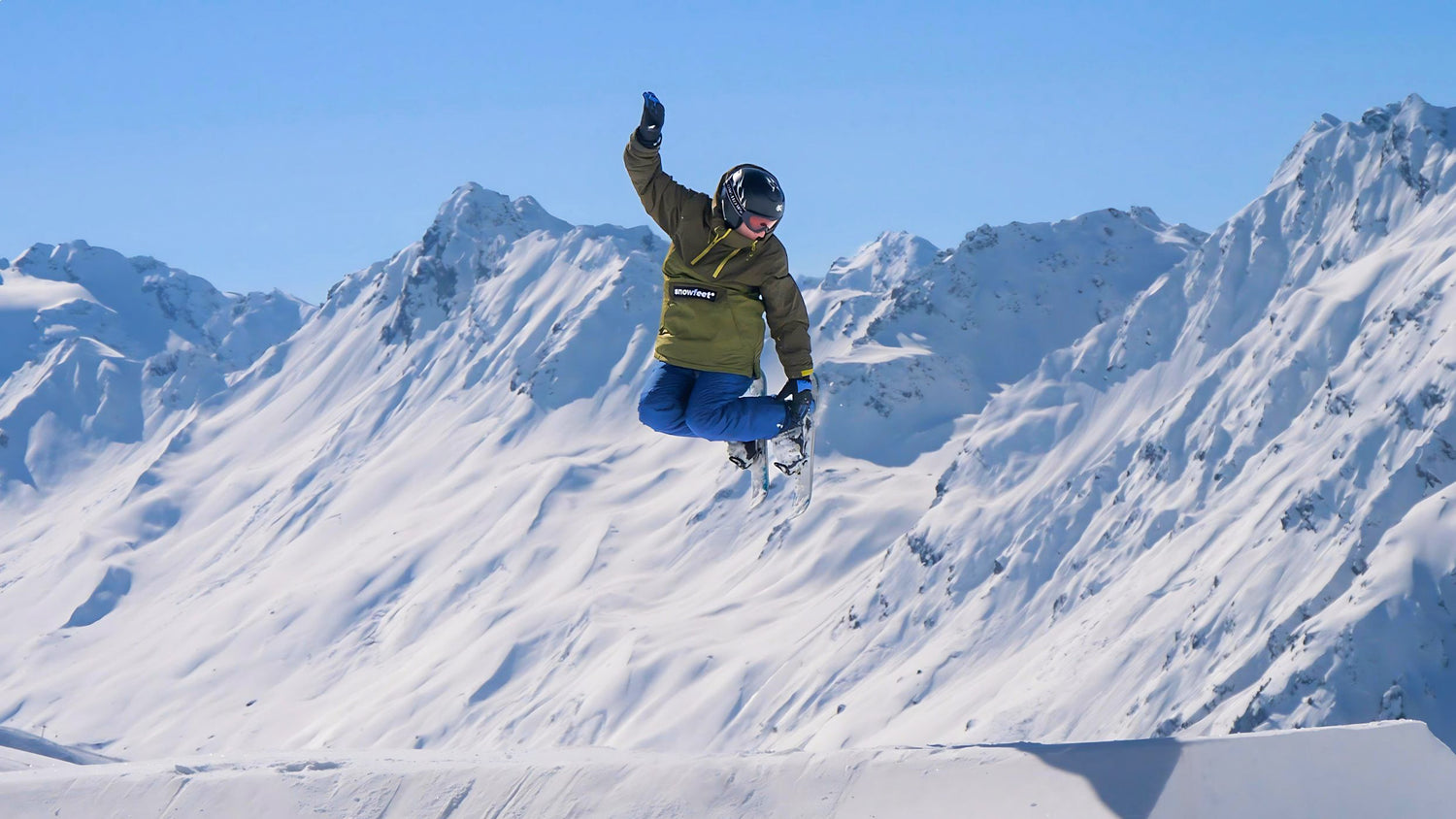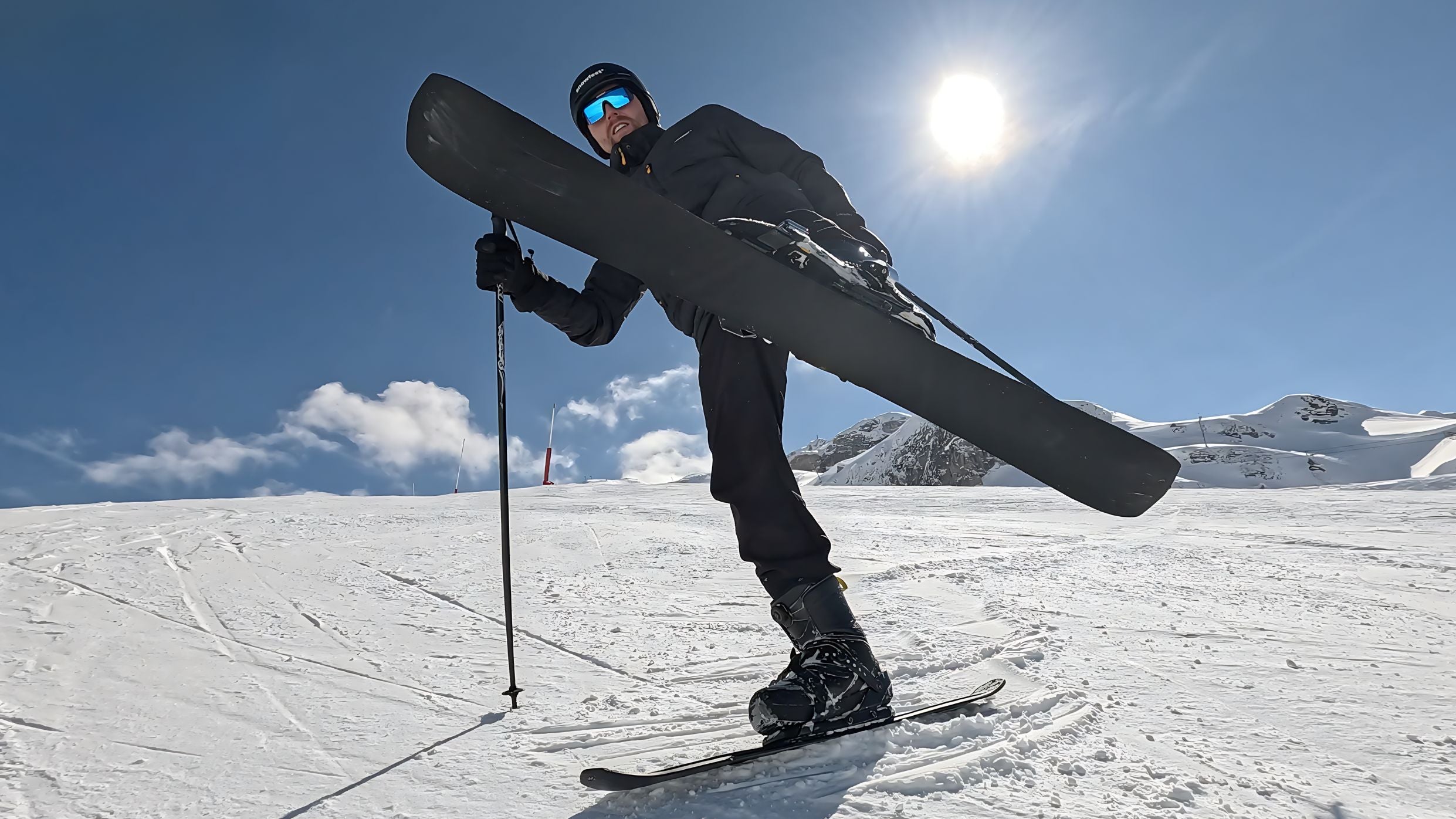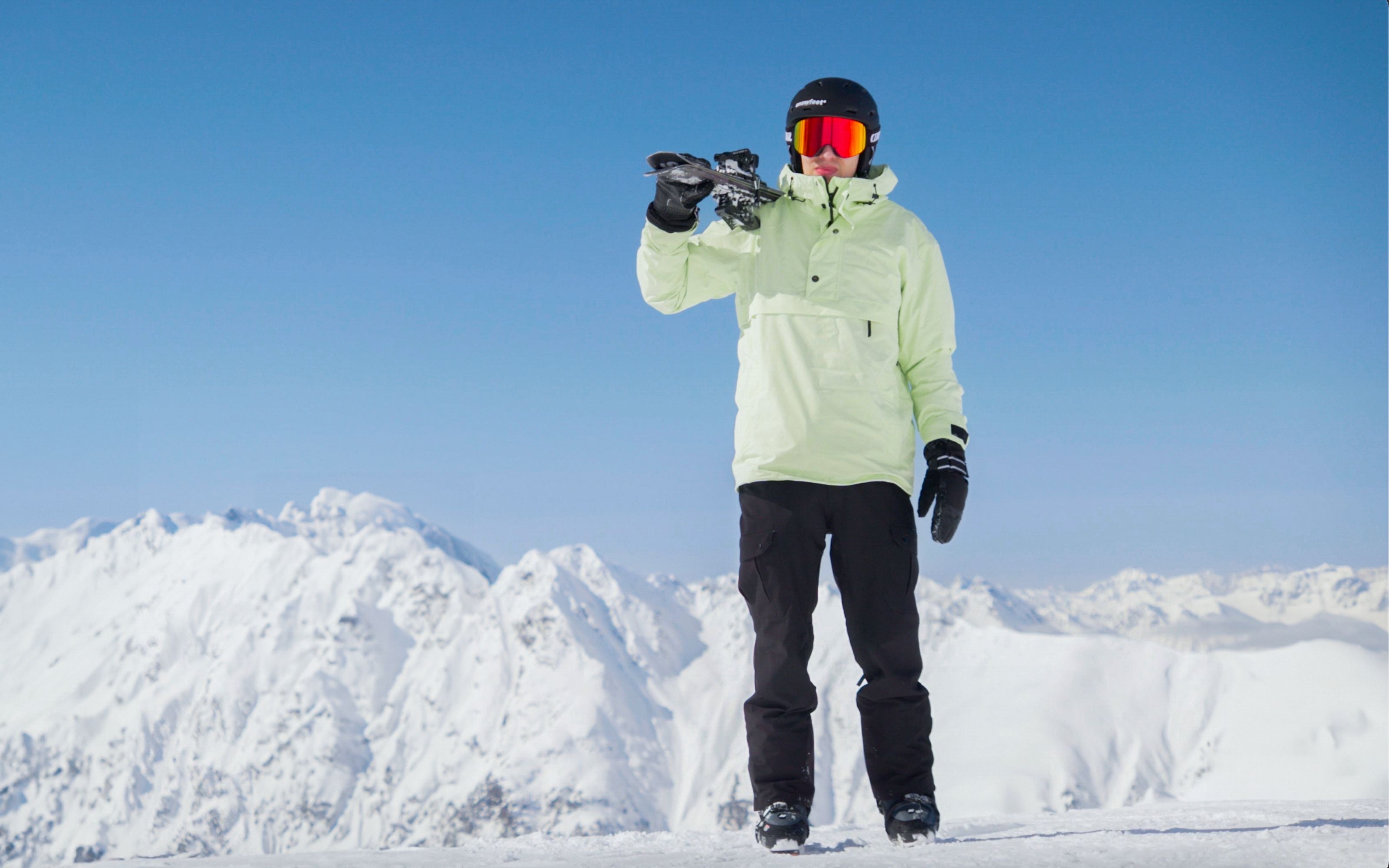Skiblades, also known as snowblades or short skis, are rapidly gaining popularity for their ease of use, versatility, and ability to turn any slope into your personal playground. In this guide, we’ll cover everything from choosing the right skiblades and bindings to mastering the basics on the slopes. Let’s dive in!
How to Choose Skiblades
Choosing the right skiblades is the first step in ensuring a great experience on the slopes. Skiblades come in different lengths, and selecting the right size can impact your control, speed, and maneuverability.
Short Skiblades (65 cm)
If you're all about quick turns, sharp maneuvers, and freestyle tricks, short skiblades are your best bet. At around 65 cm, these skiblades are perfect for skiers who enjoy tackling moguls or those who want to feel like they’re skating on snow. Due to their short length, they are incredibly easy to control, making them a popular choice for kids and beginners who want to build confidence quickly. The shorter length allows for rapid direction changes and a playful ride, which is ideal for skiers who want to focus on agility and creativity. Ride with short skiblades resembles the most skating on snow.
Skiblades 99 (99 cm)
Skiblades 99 are the choice that combines the perks of longer and shorter skiblades models. They are agile and swift, allowing to perform tricks in parks and quick fast turns but at the same time they provide enough support. Skiblades 99 are perfect for carving, as well as ride accross moguls. If you are not sure if go shorter or longer, go for 99.
Long Skiblades (120 cm)
For those who prefer more stability and speed, longer skiblades, such as the 99 cm models, are the way to go. These skiblades offer a bit more length, providing increased support and a smoother ride, especially at higher speeds. They’re closer to traditional skis but with the added benefit of being easier to control. If you’re a beginner looking for a forgiving, stable platform to learn the basics, or if you love carving through powder with precision, longer skiblades will give you the best of both worlds—stability and agility.
How to Choose Bindings for Your Skiblades
Choosing the right bindings is just as crucial as choosing the right skiblade length. The bindings you select can affect your comfort, safety, and overall performance on the slopes. There are three main types of bindings to consider:
Non-Release Bindings
Non-release bindings, also known as simple ski bindings, are the most basic option available. These bindings do not release in the event of a fall, which might sound concerning, but they are incredibly secure and ideal for shorter skiblades (like the 65 cm models). Non-release bindings are adjustable and easy to set up at home, making them a cost-effective choice for beginners and those looking for a hassle-free setup. They provide a solid grip, are perfect for general use, and keep the overall price of your setup low.
Release Ski Bindings
Release ski bindings are designed for safety. They release the skiblade from your boot in the event of a fall, reducing the risk of injury. If you’re using longer skiblades (99 cm and up), release bindings are often recommended to provide peace of mind as you shred down the mountain. These bindings are especially important for skiers who plan to tackle more challenging slopes or who want the added security of a binding that will release under pressure. They are slightly more expensive than non-release bindings but are a worthwhile investment for safety-conscious skiers.
Snowboard Bindings
Snowboard bindings on skiblades? Absolutely! If you're a snowboarder looking to mix things up, or if you simply find ski boots uncomfortable, snowboard bindings offer a unique and comfortable option. Snowboard boot bindings are compatible with skiblades up to around 100 cm. They bring the ease and comfort of snowboarding to the skiblading experience, allowing for a relaxed ride with plenty of flexibility.
Is It Hard to Learn?
One of the most common questions asked about skiblades is, "Are they hard to learn?" The answer is a resounding no! Skiblades are remarkably easy to pick up, even for those new to skiing. Their shorter length makes them highly maneuverable, and their design makes them far less intimidating than traditional skis.
Why Skiblades are Easier to Master
Because skiblades are shorter and easier to control, they require less effort to turn, balance, and stop. This makes them an excellent choice for beginners who want to avoid the steep learning curve associated with longer skis. With skiblades, you can focus on enjoying the ride rather than worrying about technique. Plus, many skiers with ice skating or rollerblading experience will find the transition to skiblades quite natural. With just a bit of practice, you'll be carving up the slopes and trying out new tricks in no time.
Ride Tips
Now that you’ve got your skiblades and bindings sorted, it’s time to hit the slopes! Here are some tips to help you get started:
1. Think Like a Skater
Skiblading is a lot like ice skating or rollerblading. Start by pushing your legs sideways in a skating motion. This will help you build momentum and control. Keep your knees slightly bent for better balance and to absorb any bumps.
2. No Need for Poles
Unlike traditional skiing, skiblading doesn’t require poles. This allows for a freer, more relaxed ride. Without poles, you can focus more on your legs and balance, which is key for executing tricks and sharp turns.
3. Carving Like a Pro
When it comes to turning or carving, position the leg corresponding to the direction you want to turn slightly ahead of the other. Put your weight on the outside edge of the front leg, lean into the turn, and let the skiblades do the work. You’ll feel a smooth glide and acceleration as you carve down the slope.
Using a Ski Lift with Skiblades
One of the questions many skibladers have is whether using a ski lift will be a challenge. The good news is that using a ski lift with skiblades is quite simple!
Getting On and Off the Lift
Because skiblades are shorter, they are easier to manage on a ski lift than traditional skis. To get on, just glide up to the lift seat as you would with regular skis. When it's time to get off, you can simply skate away with a few short, quick movements. If you're still concerned about stability, feel free to use ski poles for extra balance.
How to Stop
Learning to stop is crucial for a safe and enjoyable skiblading experience. Here are a few techniques to consider:
1. Use Your Edges
To slow down gradually, use the edges of your skiblades by pressing them into the snow. This will create friction and gradually bring you to a stop.
2. Make a Sharp Turn
If you need to stop quickly, make a sharp turn across the slope. This will naturally reduce your speed and bring you to a halt.
3. The Hockey Stop
Feeling adventurous? Try the hockey stop. Twist your body and turn your skiblades perpendicular to the slope. Push your skiblades into the snow, and you'll come to a dramatic stop, spraying snow like a pro!
Conclusion
With the right skiblades and bindings, even beginners will find it easy to pick up and master. Remember, skiblading is all about having fun, so don't be afraid to experiment with different lengths, bindings, and techniques to find what suits you best. Now that you’re equipped with all the basics, it’s time to hit the snow and make the slopes your playground!















Leave a comment
This site is protected by hCaptcha and the hCaptcha Privacy Policy and Terms of Service apply.